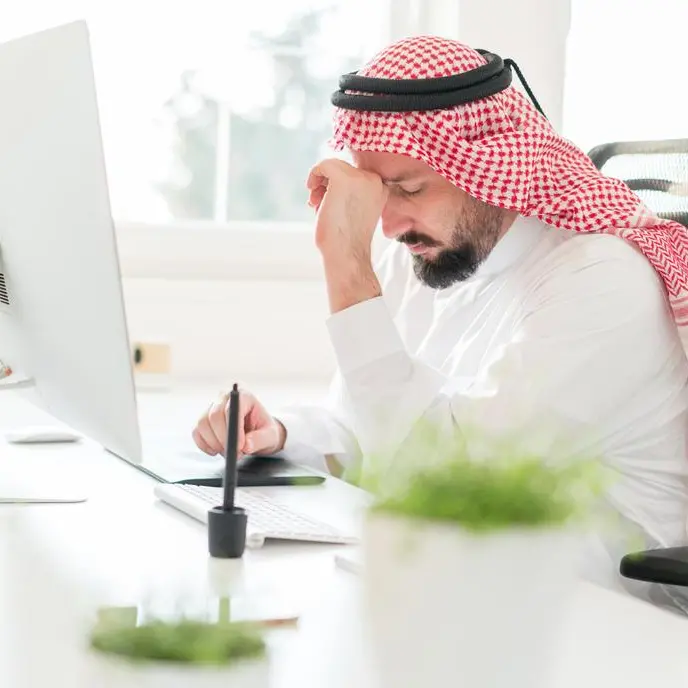PHOTO
Technology and media confluence sets #AJTechSummit top trending on social media for two days
May 11, 2017 – Doha, Qatar
Held under the patronage of His Excellency Sheikh Hamad bin Thamer Al-Thani, Chairman of Al Jazeera Media Network, AJMN’s “Future of Media – Leaders’ Summit” concluded today at the Ritz Carlton Hotel in Doha. The Summit, the first of its kind in the region, prominent figures and leaders of the world’s top broadcasting and media organizations to discuss innovation and transformation strategies in the face of digital disruption.
The closing day began with a pair of presentations about the ways increased social media use has affected media organisations’ relationship with their content and audiences. Keynote speaker Mohammed Nanabhai, Deputy CEO at Media Development Investment Fund, outlined how quickly the way news organisations and their audiences interact have changed. He reminded attendees that as recently as 20 years ago, information moved in one direction, from media providers to consumers. Since then, however, the flow has become increasingly back-and-forth.
“People on social media are now the first one to cover events such as protests, and that in turn drives media coverage. That coverage then then drives people to take part in these events, which creates even more coverage on social media. It becomes a cycle,” Nanabhai said.
He noted several contradictions that social media has created for the media industry. For example, organisations have lost their direct link to their audiences, but are paradoxically able to engage more with them. While new narratives and voices are emerging that were once overlooked, at the same time censorship by state actors is also on the rise.
Al Jazeera Executive Director Dr. Yaser Bisher addressed the changing relationship between media and audience in his presentation about Al Jazeera’s digital strategy. He outlined the major challenges Al Jazeera faces in a social media-driven world, including shortened attention spans, fragmentation of audiences, and the sheer volume of content being created.
Bisher urged attendees to focus on user experience, using the Apple iPhone as an example. The iPhone experience doesn’t begin when one turns the phone on, he said. Instead, it begins from the very idea of being a part of what is perceived of as a separate group—iPhone owners—and that experience is reinforced by Apple’s stores and buying experience.
“Put your content in a unique user experience,” Bisher said. “Understand the triggers that lead your users to go where they do for the information they are seeking. That is where the user experience starts, not when they open the app.”
As media organisations become more connected to their audience, the opportunities for hostile actors to take advantage of that connectivity increase as well, said Haroon Meer, founder of South African firm Thinkst Applied Research. His presentation on cyber security and the broadcast industry served as a wake-up call for a field he said has been until recently isolated from such threats.
Increased connectivity and complexity, a shortage of IT security experts, and a rise in motivated attackers all combine to threaten broadcast media in ways the industry may not be prepared for, he said, and addressing those threats requires a fundamental change in mindset.
“The threat is real. Broadcast has been protected almost by accident because you have been hidden on an island, and you’re not anymore,” Meer said. “You will be breached. The question is, how will you react?”
The afternoon began with a presentation by Ken Morse, Media CIO at Cisco Systems, who spoke about the way newsrooms are evolving in the digital age.
“Media distribution is absolutely going through a renaissance,” he said.
In closing the Summit, Dr. Mostefa Souag, Acting Director General of Al Jazeera Media Network, said, “This conference represents a unique opportunity for TV and digital media professionals in our region to discuss ideas related to the latest technologies relevant to their work, and to learn about the latest technological innovations in television broadcasting, digital media platforms, cloud storage, data security and content dissemination. We hope that it has contributed to a clearer picture of the future of the media and the expected changes in the nature of our work, so that we can prepare to keep pace with this development and make maximum use of it.”
Along with Al Jazeera, sponsors of the event include Cisco, Microsoft, Avid, CommVault, SAP, Smart Global, and Tech Mahindra, as well as the Ministry of Transport and Communications.
Yesterday, keynote speaker Paul Lee, Partner and Global Head of Research for the technology, media, and telecommunications (TMT) industry at Deloitte, presented research about the ways digital and traditional media are complementing each other. While mobile device usage has climbed over the last three years, live television consumption has remained steady—and significantly higher than digital usage.
“Digital transformation will never end, but it doesn’t need to be zero-sum disruption,” Lee said. “It doesn’t have to be them versus us; it can be them and us.”
He added that although people are spending more time on their phones, certain forms of media, such as feature films and television series, do not lend themselves to mobile consumption because of the limitations in screen size.
“People glance at social networks, but they gaze at longform video,” he said. He noted that while live media consumption has declined and digital consumption as increased, live television remains overwhelmingly the best way for advertisers to reach a broad audience. Furthermore, older audiences tend to prefer live content—and that demographic, based on its buying power, is highly appealing for advertisers.
Lee’s speech was followed by a roundtable on how media organisations are adapting to digital transformation. During that discussion, experts debated the extent to which digital platforms will subsume traditional media.
“Nobody will know the difference between digital and traditional in the next 10 years. Consumers will be in control of the industry in the next decade,” said Josbert van Rooijen, Vice President of Strategic Programs at Ericsson Broadcast and Media Services in the Netherlands.
Al Jazeera’s Mohamed Abuagla, CIO/CTO of Al Jazeer Media Network, presented on how the organisation has constantly adapted to changing technology over its 20-year history. When the channel launched, mobile phones were primitive, as were collaborative technologies. Since then, changes in communications models and behaviours, from social media, mobile devices, consumption habits and collaboration tools, have blurred the lines of media.
All of these changes were happening at the same time as Al Jazeera expanded internationally and increased its digital presence. To manage this expansion, Abuagla spearheaded Al Jazeera Workplace Transformation, which unified the network’s global locations, allowing them to be more flexible, collaborate better and share media faster.
“Transformation has to be holistic, involving people, processes and technology,” Abuagla said. “To become more transformative, you need to become a service provider.”
He identified several developing technologies that will continue to shape Al Jazeera’s approach, including artificial intelligence (AI), Big Data and Blockchain.
Rainer Kellerhals, Industry Lead for Media and Cable EMEA at Microsoft, spoke on cloud and cognitive computing’s impact on newsrooms. He noted that the proliferation of big data gives journalists a powerful new source of information that they can mine and present to their audiences in new ways.
“Data journalism is about understanding the story from the data and bringing it to life,” he said.
Kellerhals also addressed the way news organisations are using data to deliver more relevant content to their audiences. “Data will drive the transition from traditional mass media to personal media with visualisation.” he said. “Together, we are working with news organizations to leverage tech for the benefit of its audience and employees.”
A panel discussion followed, in which participants shared their thoughts on the challenges the broadcast industry faces as it moves to the cloud. Wolfgang Wagner, Director of Production and Engineering at German broadcaster WDR, said media organisations will necessarily have to merge functions that in the past had been separate.
“In the future, media professionals will need to have a broad education of broadcast technology and a sound understanding of IT,” Wagner said. “They will need to be able to merge these seamlessly.”
The afternoon continued with more optimism about the marriage between technology and media. Jeff Rosica, President of Avid Technologies, outlined the potential benefits of embracing so-called digital disruption. “Digital is disrupting every aspect of our lives, but it’s not a bad thing. People are consuming more content and that has created huge opportunity for our industry,” he said.
However, he also identified several common challenges that come with increasingly embracing digital, including increased rate in content creation, exponential growth of distribution platforms, increased rate of content consumption, and lagging media budgets.
The Summit’s first day concluded with a case study from Delbert R. Parks, Senior Vice President and CTO at American media firm Sinclair Broadcast Group. Sinclair has significantly expanded its digital distribution in the United States, requiring new technologies to effectively provide content to its audience.
“Over the next decade television as we think of it will evolve dramatically,” Parks said. “We are adopting a more efficient and effective video distribution model while ensuring the interactivity of our advertising and content.”
A tour of the Al Jazeera newsroom and a gala dinner brought the first day of the Summit to a close.
-End-
Al Jazeera Media Network
Al Jazeera strives to deliver content that captivates, informs, inspires and entertains. Launched in 1996, Al Jazeera was the first independent news channel in the Arab world dedicated to providing comprehensive news and live debate. It challenged established narratives and gave a global audience an alternative voice—one that put the human being back at the centre of the news agenda—quickly making it one of the world’s most influential news networks. Since then, it’s added new channels and services, with more than 70 bureaus around the world, while maintaining the independent and pioneering spirit that defined its character. Each subsidiary follows the same principles—values that inspire it to be challenging and bold, and provide a ‘voice for the voiceless’ in some of the most underreported places on the planet.
About Microsoft Gulf
Microsoft (Nasdaq “MSFT” @microsoft) is the leading platform and productivity company for the mobile-first, cloud-first world, and its mission is to empower every person and every organization on the planet to achieve more. Microsoft Gulf opened its Dubai-based headquarters in 1991. Microsoft Gulf today oversees Microsoft activities in Bahrain, Kuwait, Oman, Qatar, and the UAE. Microsoft Corporation's address on the World Wide Web is: www.microsoft.com ; Microsoft Middle East's Web site is www.microsoft.com/gulf.
About Cisco
Cisco (NASDAQ: CSCO) is the worldwide technology leader that has been making the Internet work since 1984. Our people, products, and partners help society securely connect and seize tomorrow's digital opportunity today. Discover more at www.newsroom.cisco.com and follow us on Twitter at @Cisco.
About Avid
Avid delivers the most open and efficient media platform, connecting content creation with collaboration, asset protection, distribution and consumption. Avid’s preeminent customer community uses Avid’s comprehensive tools and workflow solutions to create, distribute and monetize the most watched, loved and listened to media in the world—from prestigious and award-winning feature films, to popular television shows, news programs and televised sporting events, and celebrated music recordings and live concerts.
About Tech Mahindra
Tech Mahindra represents the connected world, offering innovative and customer-centric information technology experiences. We are a USD 4.2 billion company with 117,000+ professionals across 90 countries, helping over 837 global customers including Fortune 500 companies. Our convergent, digital, design experiences, innovation platforms and reusable assets connect across a number of technologies to deliver tangible business value and experiences to our stakeholders. Tech Mahindra is amongst the Fab 50 companies in Asia (Forbes 2016 list). We are part of the USD 17.8 billion Mahindra Group that employs more than 200,000 people in over 100 countries
About SAP
As market leader in enterprise application software, SAP (NYSE: SAP) helps companies of all sizes and industries run better. From back office to boardroom, warehouse to storefront, desktop to mobile device – SAP empowers people and organizations to work together more efficiently and use business insight more effectively to stay ahead of the competition. SAP applications and services enable more than 345,000 business and public sector customers to operate profitably, adapt continuously, and grow sustainably. For more information, visit www.sap.com . Follow SAP on Twitter: @SAPMENA
About Commvault
Commvault is a leading provider of data management and data protection solutions, helping organizations worldwide activate their data to drive more value and insight for their business. Our solutions portfolio of data protection and recovery, cloud, virtualization, archive, file sync and share enables customers to reduce IT cost, better leverage data, improve IT operations, and increase overall efficiencies. For more info, please visit: www.commvault.com.
About Smart Global
For over fifteen years Smart Global has and continues to support you, international and domestic commerce champions, prominent non-profits, and Sovereign arms with the knowledge, tools and know-how ensuring your successful business entry, continuity and expansion. When you are in concert with Smart Global you are guaranteed that your success is in hand.
About Ministry of Transport & Communications (MOTC)
Established by Emiri Decree in 2016, the Ministry of Transport and Communications is responsible for the development, implementation and improvement of transportation and communications services within the State of Qatar. The Ministry oversees all activities within key sectors of national transport infrastructure, principally road and rail networks, public transportation, maritime and port activities, and civil aviation. Furthermore, the Ministry is responsible for overseeing the development of Qatar’s information and communications network, including extensive cyber-security protection and awareness, e-Government transformation and digital society initiatives
© Press Release 2017











